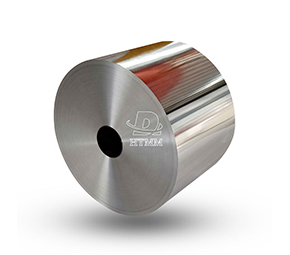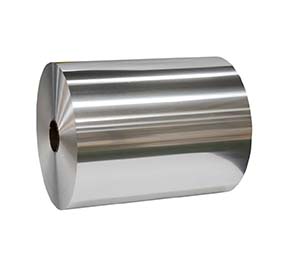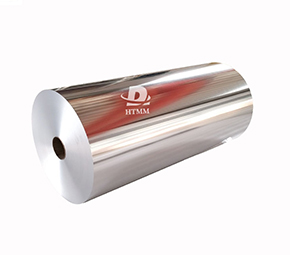First, let's talk about the benefits of using food-grade foil that is 18 microns. It falls into the heavy-duty category due to its 18-micron thickness. Compared to thin household foil, it is more resilient and less likely to tear. It is appropriate for oven baking, steaming, and chilling because it can tolerate temperatures higher than 220°C. It passes stringent safety testing and is free of heavy metals and other dangerous ingredients because it is a food-grade product. One of the main reasons companies are prepared to invest in it is because food cannot become contaminated by direct contact.
The 18-micron food-grade foil's jumbo roll design was created especially to meet the food industry's large-scale, industrial demands; its main benefit is that it helps high-volume users with waste and efficiency issues. Consider the massive central kitchens that serve as the foundation of corporate canteens, event catering services, and catering chains. Every day, they make hundreds of identical meals, ranging from roasted vegetables to grilled chicken breasts. Here, the manufacturing line would be disrupted by frequent roll changes of tiny packs of aluminum foil, which would cause delays and human error. Compared to smaller rolls, the jumbo roll of 18-micron food-grade foil removes this inconvenience and enables continuous packaging procedures that increase efficiency by up to 30%.
18-micron food-grade foil jumbo rolls are even more versatile for food processing facilities that deal with semi-finished goods like marinated meat slices, pre-cut vegetables, or frozen pastries. These facilities handle a range of product sizes, from family-sized meals to tiny snack packs. It is possible to carefully trim the wide jumbo roll to fit the measurements of each item, leaving very little extra material. In addition to reducing material waste by 15% to 20%, which over time saves a substantial amount of money, this also guarantees a clean, uniform package appearance that improves the appeal of the product.

Even amid slight market changes, the food industry's consistent need for 18-micron food-grade foil jumbo rolls is a direct result of its unparalleled practicality. Additionally, consistent demand helps to stabilize the price of 18-micron jumbo rolls per ton, avoiding sharp price fluctuations that would interfere with both caterers' and manufacturers' procurement budgets. Demand is fueled by the design's utility, while pricing stability is anchored by predictable demand.
What, then, affects the cost of 18-micron jumbo rolls per ton? The price of raw aluminum materials comes first. The price of aluminum ingot varies every day. The cost per ton of food-grade aluminum foil will unavoidably change in tandem with increases in the price of raw materials. The second is the manufacturing procedure. Precise rolling technique is necessary to reach an 18-micron thickness. Additionally, food-grade goods need to be more pure than regular industrial aluminum foil, which raises the cost of processing. The price per ton directly reflects these expenses.
Another important factor affecting the price of 18-micron jumbo rolls per ton is market supply and demand. For instance, the food manufacturing and catering sectors place a spike in orders during holidays, which raises demand for giant rolls and may result in a small price increase. On the other hand, suppliers might provide discounts during the off-season, when demand is weaker, bringing down the price per ton. Additionally, regional variations in customs and transportation costs result in pricing variations for the same product size.
Prices for 18-micron jumbo rolls not same per ton, although there isn't a set market price at the moment. The capabilities of the provider determine the exact cost. Although they might charge a little more, large manufacturers with consistent production capacity and stringent quality control can ensure on-time delivery. Although small-scale workshops could have more affordable costs, their goods might be less safe and have uneven thickness, which could cause more issues down the road.
In addition to the cost per ton, it's crucial to look for food-grade certifications like FDA and LFGB when buying 18-micron food-grade foil jumbo rolls to make sure safety regulations are being followed. To find the best deal, you can also evaluate quotations and post-purchase support from other vendors.
In summary, a number of factors, such as supply and demand, processing, and raw materials, affect the cost of one ton of 18-micron jumbo rolls. Nonetheless, 18-micron food-grade foil is essential to the food industry because to its practicality and safety. You may choose a product that is dependable and reasonably priced by taking your needs into account and researching the market.





